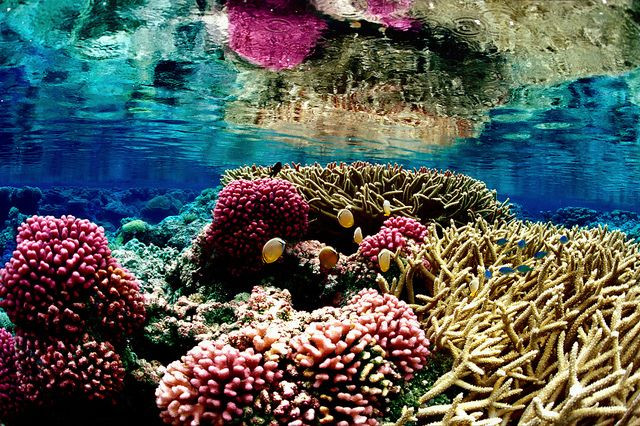Israelis Use 3D Printing Tech To Save Coral Reefs

Hot as it is today, a rise in the world’s average temperature by 15°C (4°F) will destroy almost all of the world’s remaining coral reef systems.
The destruction of these living organisms, the largest of which (Australia’s Great Barrier Reef) can be seen from outer space, will deprive countless species of fish that feed humans of the nurseries they need to spawn their young. The vast reduction in the world’s supply of fish will have devastating consequences for humans.
As it stands today, climate change is the greatest -- but not the only -- threat to the continued existence and propagation of coral reefs. Other great dangers to reef systems worldwide are dynamite fishing, pollution by humans and even invasive fish species such as the lion fish.
From 30% to 50% of the Great Barrier Reef was eliminated by heat waves occurring in 2016 and 2017. The unrelenting heat raised water temperatures to uninhabitable levels for coral reefs, leading to a death portending phenomenon called coral bleaching.
Temperatures 1°C (4°F) above average can cause bleaching. Between 2014 and 2016, the longest recorded global bleaching events killed coral on an unprecedented scale, said the United Nations Environment Program.
In 2017, the bleaching extended into the central region of the reef. The average interval between bleaching events has been halved between 1980 and 2016.
Israeli scientists are developing 3D-printed reefs imitating natural shapes that attract different species of fish. Fish will use these 3D structures as their nurseries in an attempt to bring back the endangered population of fish that once inhabited the coral reefs of Eilat in Israel.
“Many factors are known to affect the possible recruitment of reef organisms and especially fish,” the study said. “One important factor is the structural complexity of a coral colony, which in turn provides shelter to residing fish. It has been shown that a coral structural complexity correlates with the reef biodiversity.”
The Israeli’s 3D printer was developed by researchers at the Technion-Israel Institute of Technology, Ben-Gurion University of the Negev and Bar-Ilan University.
It uses polyactic acid to produce the column-like structures that are then installed into the water.
From there, the columns are planted individually with farmed coral to mimic the complexities of coral reef ecosystems. Polyactic acid is a biodegradable and bio-active bio-plastic made from corn, cassava or sugarcane.
In theory, these efforts will bring important species of fish back to these areas in an attempt to completely reconstruct the barren reefs along the coast of Eilat.
Israeli scientists have experimented with many different shapes, colors and materials to develop the final design of the product, which is being tested off the coast of Israel. Early indicators suggest the preferences of many of these species differ and depend on contrasting combinations of material and color.
“As a research group that is composed of marine biologists and designers, we seek to find the next practices and tools to explore ecological functionality of coral morphology,” the researchers said. “We believe that coral reef rehabilitation and management as well as artificial reef construction require better understanding of how the single coral colony morphology interacts with its inhabitants.”
Scientists are using 3D manipulation and printing to further understand if man-made structures can foster a natural ecosystem where species of fish essential for these ecosystems can flourish. They also seek to discover the advantages of using advanced design tools such as 3D scanning and manipulation to create artificial corals.



























